7 Steps To Do A Pull-Up Exercise For Women
Practice these simple steps to enhance your posture and boost your confidence.
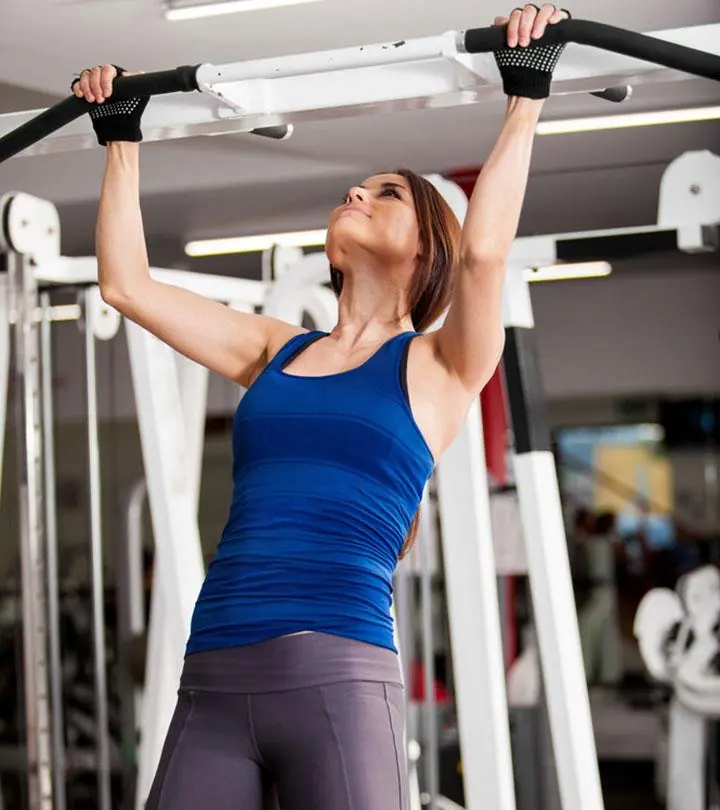
Image: Shutterstock
Ladies, pull-up exercises can be the best thing to ever happen to you. But only if you try them! Biologically, women have 40% lower upper body strength and muscle mass than men. But doing pull-ups is essential for strengthening the upper body and toning the pectoral muscles or the chest, shoulders, back, and arms. This exercise is a part of calisthenics or bodyweight exercises. It is great for preventing breast sagging and can also help improve your posture and make you feel confident in any attire. However, mastering pull-ups requires practice and determination. You also need patience, as lifting your entire body with just your arms is not an easy task. But once you get the basics, you will only be stunned by the results. These compound exercises also promote long-term physical strength. Read on to know the right steps to take to master pull-ups and learn further about their benefits too.
 Workout Blueprint: Pull-Ups For Women
Workout Blueprint: Pull-Ups For Women- Frequency: 3-4 times per week
- Benefits: Improve posture and strengthen the upper body.
- Equipment Needed: Pull-up bar, weight belt, resistance band.
- Space Required: Large area
- Assistance Required: Yes
- Who Should Avoid: Anyone with a shoulder, back, wrist, or neck injury.
In This Article
7 Steps To Do A Pull-Up Exercise Like A Pro

Step 1: Prep Your Muscles
You need to learn to use your muscles efficiently without hurting yourself, and by exerting the maximum strength. For this, you need to prep your body by doing the exercises listed below.
- Incline dumbbell curls – 3 sets of 10 reps
- Reverse preacher curl – 3 sets of 10 reps
- Standing barbell curl – 3 sets of 10 reps
- Elbows out rows – 2 sets of 10 reps
- Batwings – 2 sets of 10 reps
- Forward elbow plank – 25-30-second hold
Take a 3-minute break between the sets. Do this twice a week.
Step 2: Prep Your Body And Mind
Pull-ups are vertical pull exercises that basically involve lifting your own weight against gravity and require minimal fitness equipment. Tough! And that’s the reason the more weight you lose, the easier it will be for you to do a pull-up. So, to make your pull-up easier, you need to shed some fat. Start by talking to your gym trainer and a nutritionist, who will give you a customized diet chart and exercise plan. Moreover, you can also train your mind to build a strong willpower so that you do not deviate from your weight loss goals or perfecting a pull-up goal.
Step 3: Avoid The Common Problems
- Eye Position – Looking at the bar when you do a pull-up can push you away from the bar and prevent you from doing a pull-up.
- Start – The most common problem when you start a pull-up is not engaging your lat muscles. The lat muscles are found below the shoulders till the sides of your back.
- Middle – When you are halfway through the pull-up, you would still need to engage your back, shoulders, chest, elbows, and arms to pull the weight of your body. Not having enough strength to do that can also hinder your pull-up.
- Finish – Even if you start the pull-up right, not finishing it well can keep you from perfecting it. The most common reasons for not being able to finish it properly are the lack of elbow drive and strength.
Some general exercising common mistakes that should be avoided while performing pull-ups include:
- Not Engaging The Core: Tightening your core helps stabilize your body and maintain proper form. Failing to do so may lead to swinging, which may reduce the effectiveness of the exercise.
- Neglecting Warm-Ups: A proper warm-up is a must for every workout as skipping it may increase the risk of injury.
- Neglecting Cool-downs: You should never skip a cool-down session as it helps promote muscle recovery and prevent injuries.
Step 4: Know The Difference Between Pull-Ups And Chin-Ups
Though both are similar, the difference lies in the positioning of your palms on the bar. Chin-ups are basically pulling your body up by placing your palms towards you and hands at shoulder-width distance. They are easier as compared to pull-ups. On the other hand, to do a pull-up your palms need to be facing away from you, and the hands placed at a wider distance. It is tougher than a chin-up as the shoulder muscles are internally rotated, and your lat muscles need to generate enough force to help you bring your elbows near your ribs and pull your weight against gravity.
Step 5: Do The Chin up Exercises
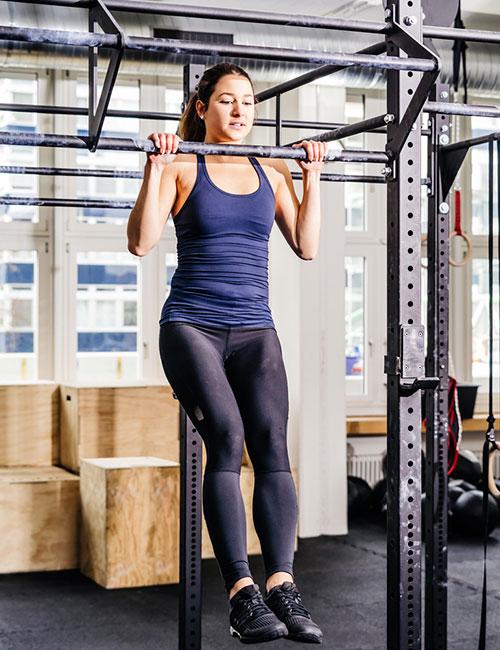
Now, before you actually go to a gym and train to master a pull-up, you should do pre-pull-up exercises to build strength. These exercises may also improve your grip strength, core engagement, and endurance to help you master the pull-ups. Here are a few exercises you can focus on. Do them every alternate day if you are not much into strength training.
1. Australian Pull-Up
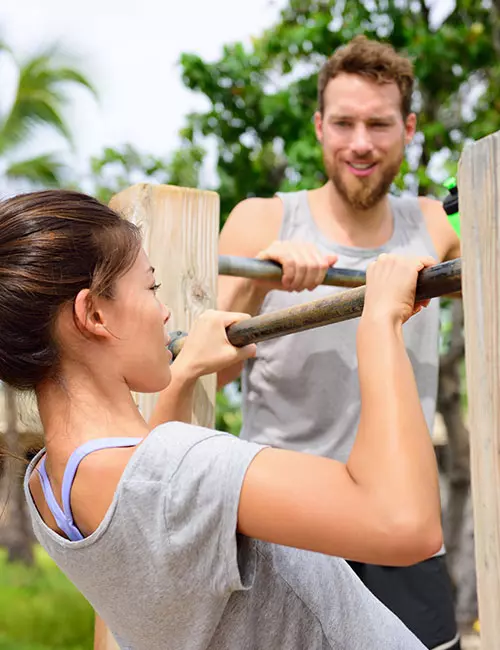
How To Do
- Position yourself underneath a waist-high bar.
- Hold the bar with your hands placed a bit wider than the shoulder width, and the palms facing away from you.
- Keep your back and legs straight. Initially, you can keep your legs on an elevated surface or fold them. Later, you can just keep your heels on the ground.
- Flex your elbows and pull your body up until the bar is an inch away from your body.
- Hold for 1 second and then slowly lower your body back to the starting position.
- Do 2 sets of 10 reps.
2. Bar Hang

How To Do
- Find an overhead bar and position yourself underneath it. Place your feet shoulder-width apart and keep your back straight.
- Hold the bar with the palms facing away from you, hands a bit more apart than the regular shoulder-width.
- Lift your legs off the ground and count to 5.
- Place your legs back on the ground and count to 5.
- Do this until you can keep hanging for 15-20 seconds continuously.
- You can also make this simple exercise challenging by changing your grip (over, under, and mixed) and by pressing and relaxing your grip when you hang from the bar.
3. Flexed Arm Hang
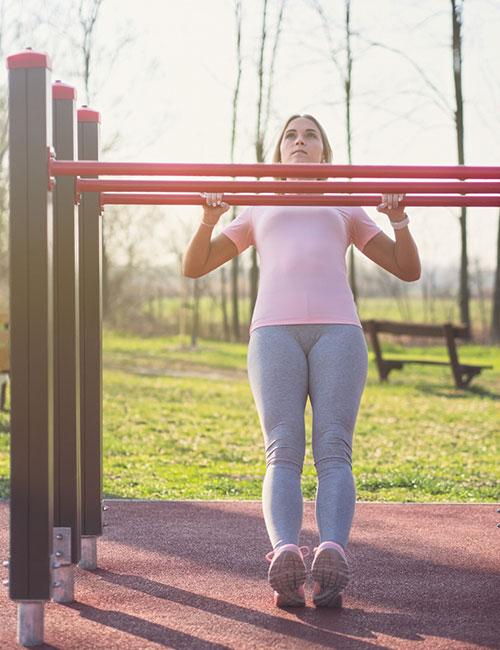
How To Do
- Find a waist-high bar and position yourself underneath it. Keep your back and legs straight,
- Use an elevated surface to rest your heels.
- Hold the bar. Your palms must be facing away, and hands shoulder-width apart.
- Lift your body by flexing your elbows. Stop when your chin is above the bar.
- Hold this position and count to 5.
- Slowly go back to the starting position.
- Do 2 sets of 10 reps.
- Increase the time gradually to 15-20 seconds over a period of few weeks.
4. Slow Reverse Pull-Up
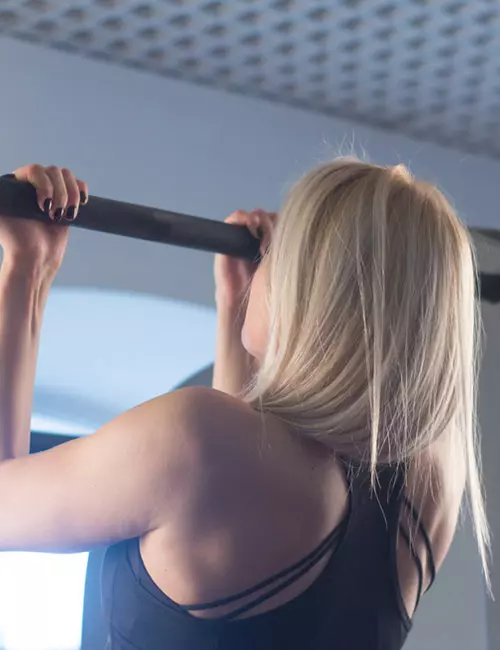
How To Do
- Find an overhead bar and position yourself underneath it. Keep your back straight and legs shoulder-width apart.
- Hold the bar and pull yourself up till your chin reaches just above the bar. This is your starting position.
- Now, slowly lower your body. Your feet should not touch the ground, and your arms should be extended. Hold this position for 5 seconds.
- Do this 1 set of 10 reps
- Gradually increase the sets and the hold time.
5. Chin-Up
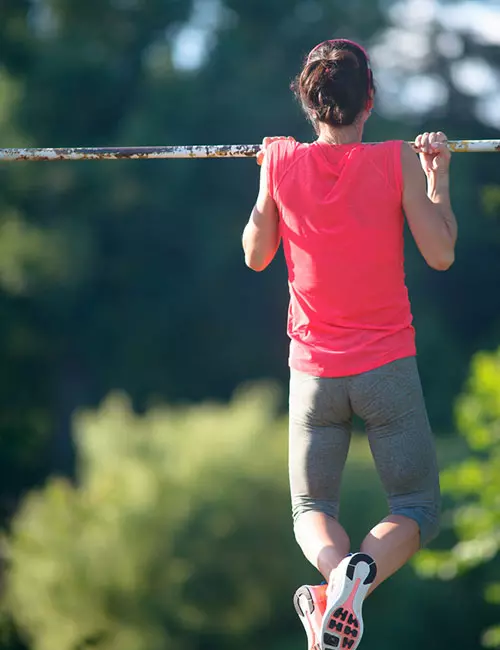
How To Do
- Stand underneath an overhead bar and hold it with your undergrip, i.e., the palms facing you.
- Engage your lats and pull yourself up until your chin reaches just above the bar. While doing this, do not keep looking at the bar. Look far away and concentrate on pulling your body up.
- Slowly lower your body and relax for 10 seconds.
- Repeat the steps. Do 2 sets of 10 reps.
Do these five exercises for 4-5 weeks to do your first close-to-perfection pull-up easily. What’s next? Let’s find out.
Step 6: Perfect The Pull-Up
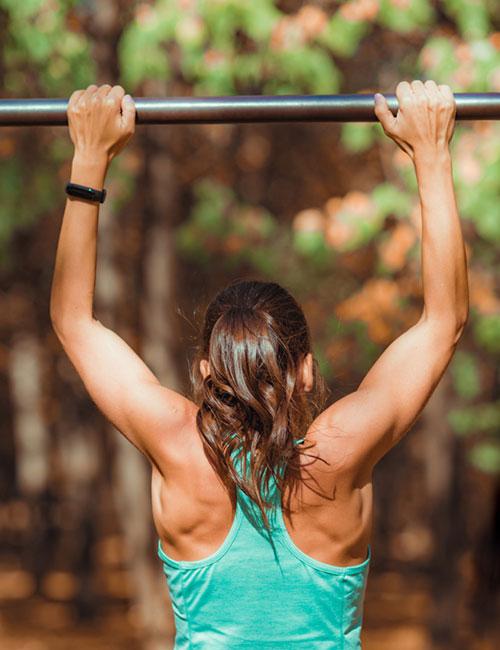
How To Do A Pull-Up Correctly
- Grab an overhead bar. Your palms must face away from you and hands must be just a little further apart than the shoulder-width.
- Engage your lats, tighten your abs, push your shoulder blades back, and clench your glutes (hip muscles).
- Look straight and flex your elbows. Lift your legs off the ground and pull-up your body until your chin reaches just above the bar. Make sure not to swing.
- Pause for a second and then slowly lower your body back to the starting position.
- Take a one-minute break and do one more pull-up.
- After a few days, when you have mastered one pull-up, try doing two pull-ups before taking a break for one minute.
- After a few more days, do 2 sets of 10 reps and then increase the number to 2 sets of 25 reps.
The amount of pre-training you have done will help you to do your first pull-up with ease. But, building upper body strength through pull-ups will take a while. So, practice and maintain good posture to prevent injuries. You can mix your pull-ups with other exercises to keep it fun and motivating. Here’s an exercise routine you can follow to reach your fitness goals. Take a look.
Perfecting A Pull-Up Exercise Routine

Monday: Push-ups, sit-ups, bar hang, flexed arm hang, chin-ups – 2-3 sets of 10 reps
Tuesday: Weighted lunges, weighted squats, incline dumbbell curls, barbell exercises or curls, elbows out rows, forward elbow plank – 2 -3 sets of 10 reps
Wednesday: Chin-ups, pull-ups – 3 sets of 10 reps
Thursday: Rest
Friday: Bar hang, barbell curls, reverse preacher curl, chin-ups – 2-3 sets of 10 reps
Saturday: Forward elbow plank, elbows out rows, pull-ups – 3 sets of 10 reps
Sunday: Rest
Once you can do 20-25 pull-ups in one go, there’s just the last door to unlock. And that’s doing different types of pull-ups. So, don’t be shy, push yourself to achieve the best of your muscle power and strength.
Larissa C., a blogger, shares her experience of overcoming the barriers and doing a successful pull-up unassisted. She shares about the roadblocks she faced and how they paved the way for her achievement. She says, “Mind you, I can only do one at a time (currently working on getting to two), but I still consider this an incredible achievement – and so does my faithful trainer (i).” She further says, “I’m still shocked by my own strength.”
Step 7: Advanced Pull-Up Exercises
1. Kipping Pull-Up
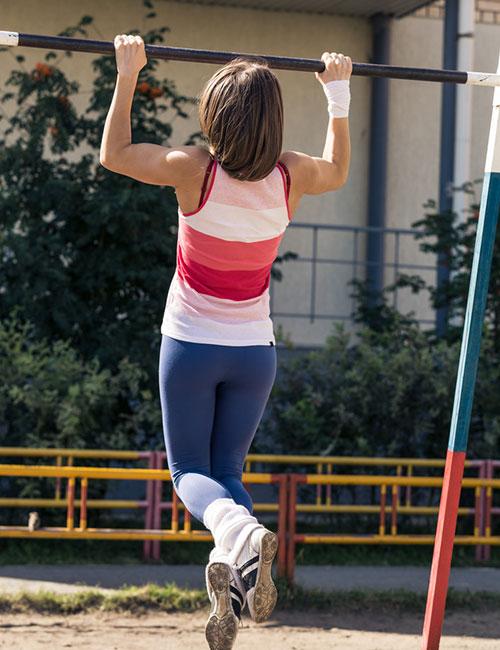
The kipping pull-up is way more challenging than the classic pull-up. You need to engage your back and hips while doing this pull-up. Here’s how you should do it.
How To Do Kipping Pull-Up
- Grab an overhead bar with your palms facing away from you, and hands slightly apart than the shoulder-width.
- Keep your back and hips engaged. Use your shoulders and legs to swing your lower body to and fro once. Swing your legs back, and when you swing forward, flex your knees and use the power of your lat muscles, biceps, and elbows to lift your body, with the chin above the bar.
- Lower your body and drop down.
- Take a break of 10 seconds and repeat.
- Increase the sets and reps as you become more comfortable with this pull-up.
Benefits
Doing the kipping pull-up may build stamina and power in all the important back muscles.
2. Close Grip Chin Pull-Up

This is similar to the classic pull-up, the only difference being that your hands will be shoulder-width apart. Here are the steps.
How To Do Close Grip Chin Pull-Up
- Grab an overhead bar with the palms facing away from you, and hands shoulder-width apart.
- Engage your lats, tighten your abs, push your shoulder blades back, and clench your glutes (hip muscles).
- Look straight and flex your elbows. Lift your legs off the ground, and pull up your body until your chin reaches just above the bar. Make sure not to swing.
- Pause for a second and then slowly lower your body to the starting position.
- Take a 10-second break and do one more pull-up.
- Increase the sets and reps as you become more comfortable with this pull-up.
Benefits
This exercise fully involves your biceps and, in the bargain, puts less weight on your back. This makes this pull-up technique comparatively easier to do.
3. Tarzan/Climber Pull-Up
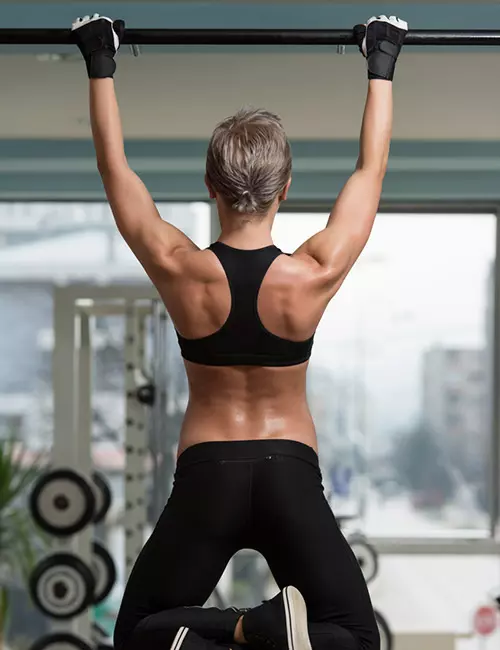
This is an amazing pull-up exercise with a twist. Let’s find out how you should do it.
How To Do Tarzan/Climber Pull-Up
- Grab an overhead bar. Keep your palms facing away from you, and hands slightly wider than shoulder-width.
- Engage your lats, glutes, biceps, and elbows. Pull your body up till your chin reaches slightly above the bar.
- Swing to your right and aim your chin towards your right hand.
- Hold for one second and lower yourself.
- Pull up and swing to your left and lower yourself.
- This completes one rep.
- Do 1 set of 5 reps initially and then increase the number of sets and reps.
Benefits
Greater coordination is required even as you pull yourself up to the right and then to the left. The exercise may also improve core strength to prevent your body from swaying.
4. Alternating Knee Twist Pull-Up
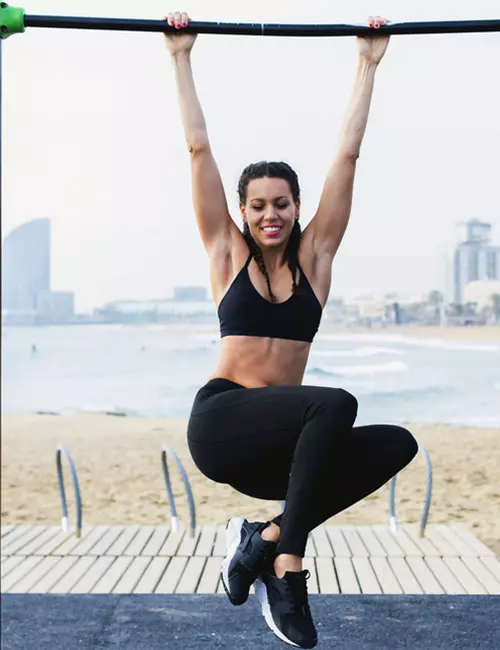
Challenging but highly effective, the alternating knee twist pull-up acts on your core, legs, back, shoulders, and arms. Here’s how you should do it.
How To Do Alternating Knee Twist Pull-Up
- Grab hold of an overhead bar. Your palms should be facing away from you, and hands shoulder-width apart.
- Pull up and flex both your knees.
- Raise the knees together and as you do so, slightly twist to the right.
- Now, release and do the same to the left.
- Do 1 set of 10 reps.
- Increase the sets and reps as you become more comfortable with doing 1 set of 10 reps.
Benefits
Your entire core is worked out while doing these kinds of pull-up fitness routines. It puts effective stress on your abs and forces your muscles to hold you up while you twist.
5. Raised Leg Pull-Up
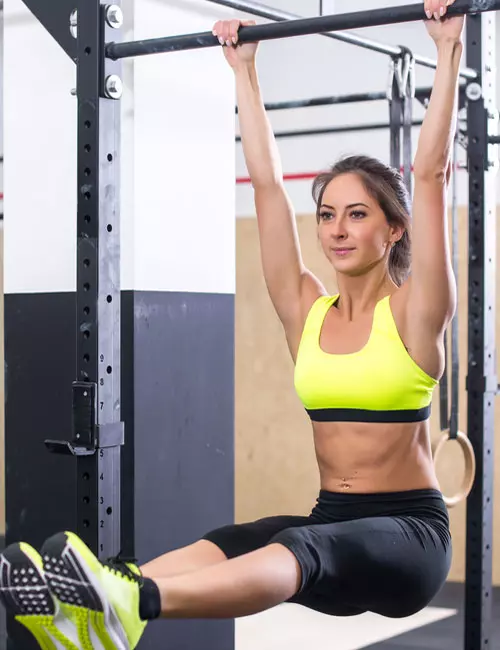
The raised leg pull-up is similar to the alternating knee twist pull-up. It acts on your glutes, core, shoulders, arms, and lats. Here are the steps.
How To Do Raised Leg Pull-Up
- Grab hold of an overhead bar. Keep your palms facing away from you, and your hands slightly wider apart than shoulder-width.
- Pull up and make sure your chin is just above the bar.
- Raise both your legs until they are parallel with the floor. Do not bend your knees.
- Hold for a second and then release.
- Do 1 set of 10 reps.
- Increase the sets and reps as you become more comfortable with doing 1 set of 10 reps.
Benefits
The pull-up bar exercise works your lower abs. It may also work the lower back muscles.
 Quick Tip
Quick Tip6. Weighted Pull-Up
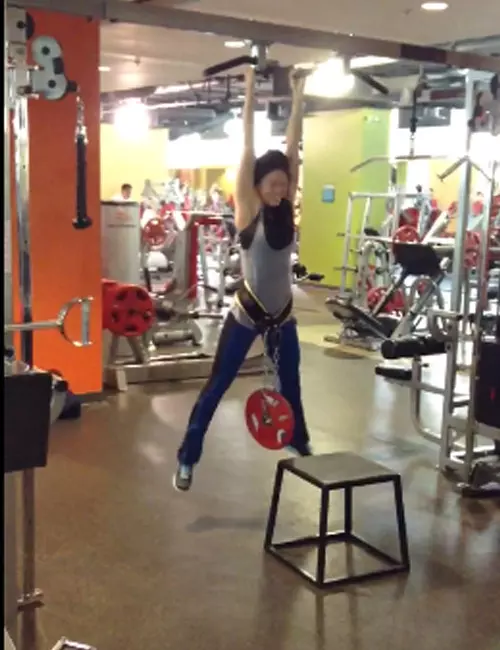
It is similar to weightlifting exercises. Tough but totally possible. Fitness experts swear by weighted pull-ups. When you become more confident about your functional fitness levels, you should try the weighted pull-up. Here’s how to do it.
How To Do Weighted Pull-Up
- Use a weight belt and start by using the lightest weight plate.
- Arch your back a bit so that the weight belt doesn’t slip down.
- Grab an overhead bar. Keep your arms apart, slightly wider than shoulder-width, with the palms facing away, knees flexed, and legs crossed.
- Now, inhale and pull up.
- Come down, keep your arms extended and again pull up.
- Release and come down. Take a 10-20-second break and repeat.
- Do 5 sets of 2 reps.
- Increase the sets and reps as you become more comfortable doing 5 sets of 2 reps.
Benefits
If you have been doing the classic pull-up without much difficulty, the added weights will coerce your muscles into growing bigger and stronger.
7. Towel Grip Pull-Up
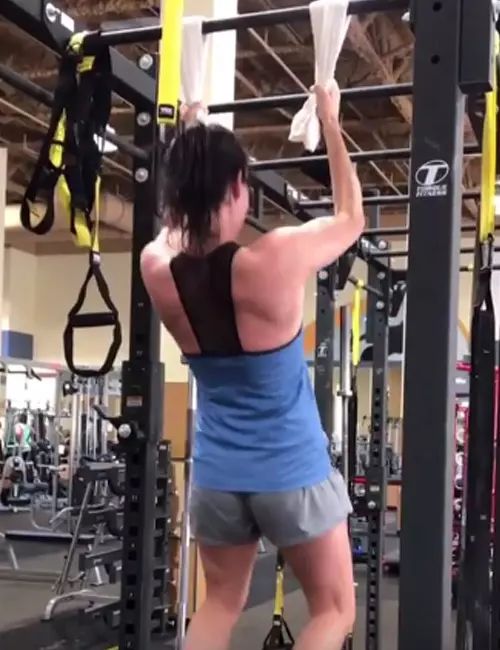
The towel grip pull-up is for those who have a problem gripping the bar or want to go rock climbing. Here’s how you should do it.
How To Do Towel Grip Pull-Up
- Put two towels on the pull-up bar slightly more than shoulder-width apart.
- Hold the towels and lift your feet off the ground. Flex your knees and cross your legs.
- Hang for one second and then pull up.
- Come down and release the towel.
- Do this 10 times.
- Increase the reps and sets as you become more comfortable.
Benefits
Holding on to the towel may help build grip strength, forearm muscle power, and arm strength. It is a muscle-building exercise that may also strengthen the entire upper back and biceps.
8. Negative Pull-Up
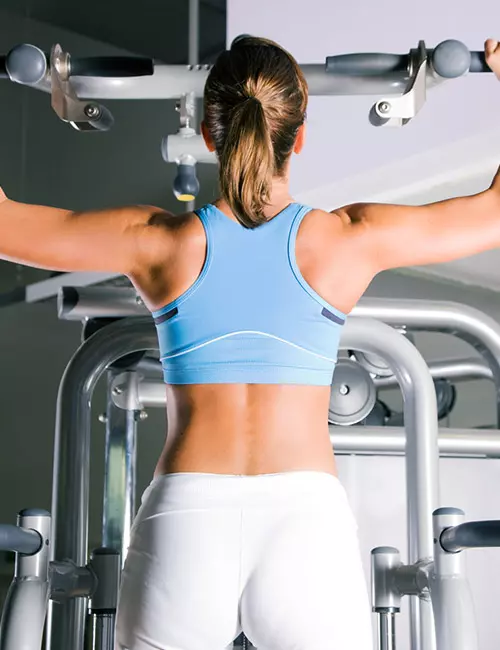
Just the opposite of the classic pull-up, the negative pull-up can easily be done if you are an expert in doing the classic pull-up. Here’s how you should do it.
How To Do Negative Pull-Up
- Keep a sturdy box just below the pull-up bar.
- Stand on this elevated surface so that the pull-up bar is much closer.
- Hold the bar and hop up. Your chin must be just above the bar, knees flexed, and legs crossed. It will not take much strength as you will be on an elevated surface.
- Slowly lower your body until your arms are fully extended.
- Release the bar and take a break of 10 seconds.
- Repeat this 10 times to complete a set.
Benefits
If you are a beginner and find doing the classic pull-up close to impossible, try this method. It will allow you to tire your muscles totally and build stamina.
 Quick Tip
Quick Tip9. Hanging Reverse Shoulder Shrugs

Hanging reverse shoulder shrugs are a bit difficult to do, although they may seem simple and easy to do. Here’s how you should do them.
How To Do Hanging Reverse Shoulder Shrugs
- Hold the pull-up bar with your palms facing towards you, hands shoulder-width apart.
- Lift your feet off the ground, bend your knees, and cross your legs behind.
- Keep your arms extended and hang from the pull-up bar.
- Now, drag your shoulders down towards your imaginary back pockets. As you do this, you will have to pull your body up a bit, but not more than an inch.
- Hold for a second and then again go back to the hanging position.
- Do this 5 times.
- Increase the reps as you become more comfortable with this exercise.
Benefits
It will strengthen your shoulder blades, lats, biceps, and forearms.
10. Band Assisted Pull-Up

In this pull-up, you will use a resistance band to make your pull-up a little easier. However, it will not do the pull-up for you. Let’s find out how you should do it.
How To Do Band Assisted Pull-Up
- Hook a resistance band on the pull-up bar.
- Hold the pull-up bar with your arms slightly wider than shoulder-width apart.
- With the help of your coach or gym partner, put one foot on the resistance band.
- Put the other foot on the foot that is on the resistance band to secure the resistance band.
- Now, pull up, with your chin slightly above the bar, and legs straight.
- Come down to the starting position.
- Do 1 set of 5 reps.
- Increase the number of sets and reps as you become more comfortable doing this exercise.
Benefits
It will make the initial learning of how to do a pull-up much easier and help build your upper body strength.
So, these were the 7 steps to master the pull-up and pull-up variations. Many people injure themselves while doing a pull-up, so take a look at these tips to avoid injury.
Pull-Up Progression Tips
- Train with a coach.
- Take rest for at least two days in a week initially.
- Use proper technique.
- Add weight gradually to your resistance training. Add more weight to build more strength.
- Always warm up.
- Practice deadlifts to make your pull-ups easier.
11. Archer Pull-Up
The Archer Pull-Up is an advanced variation of the traditional pull-up that offers a challenging and effective way to target different muscle groups.
How To Do Archer Pull-Up
- Grip the pull-up bar with your hands wider than shoulder-width. Use an overhand grip.
- Hang from the bar, fully extend your arms, and engage your core for stability.
- Begin the pull-up by shifting your body to one side, bending one arm while keeping the other straight.
- Pull yourself up until your chin reaches the bar on the side you shifted towards.
- Lower yourself down to the starting position.
- Repeat the exercise by shifting your body to the opposite side and bend the other arm.
- Perform 1 set of 5 reps and on each side.
- Increase sets and reps as you get stronger.
Benefits
Archer pull-ups enhance upper body strength, target multiple muscles, and promote core stability to foster well-rounded and progressive strength training.
Here are a few questions that we often get from clients and readers. Take a look.
Key Takeaways
- Pull-up exercises may help enhance physical strength and posture.
- There are a number of pull-up exercises, such as bar hang, slow reverse pull-up, climber pull-up, and raised leg pull-up.
- Sagging breasts may be prevented with pull-up exercises.
- These exercises may tone and strengthen your upper body.
Infographic: Benefits Of Pull-up Exercises For Women
Pull-up exercises are a great way to improve upper body strength and muscle mass. They yield visible results once done correctly and benefit in multiple ways.
The following infographic provides information about the various benefits of pull-up exercises. Check it out!
Some thing wrong with infographic shortcode. please verify shortcode syntax
Pull-up exercises are essential to tone and strengthen your upper body. These upper body exercises target the pectoral muscles, your arms, shoulders, upper back, and abs. While it’s not easy to begin with, you can see yourself getting better at it with regular practice. Once comfortable, you can add to the reps, time, and variations to enhance your workout benefits even further. You can also pair these exercises with other workout plans like plyometric exercises and circuit-training workouts.
Frequently Asked Questions
Can I do pull-ups every day?
Yes, you can do pull-ups every day. Dr.Alexandra Anderson, a certified physical therapist, says, “However, typically when we advise on strength training, we want to include 1-2 days of rest to allow for repair of the muscle prior to loading (or working out) that particular muscle group again. If you would like to perform pull-ups on a daily basis, my recommendation would be to gradually work up to it.”
What is the difference between pull-ups and chin-ups?
Pull-ups differ from chin-ups with regard to the hand position on the bar. Dr. Anderson explains, “During a pull-up, the forearms are pronated, meaning the palms are facing away from you. The opposite grip is used for chin-ups – the forearm is supinated and therefore palms are facing towards you.”
Will pull-ups give you a big back?
Yes, it may help you achieve a big back. Dr. Anderson says, “Pull-ups work a muscle called your Latissimus Dorsi. This is a big muscle connecting from the shoulder all the way down to the lower back and is commonly admired by swimmers. If you like this look, pull-ups are for you!”
Will I start looking like a man if I do pull-ups regularly?
No, you will not. Men have higher testosterone levels than women, which makes all the difference. In fact, pull-ups will help you get an hourglass figure that will make the men go crazy!
How long should I train to perfect a pull-up?
Depends on your body weight, adherence, practice, and coach. It can take anywhere between 6 months to 12 months.
Do I have to lose weight to do a pull-up?
If you lose weight, it will be easier for you to lift your body weight against gravity. You will also look more toned.
Will it cause back injury?
If you have or had a back injury, talk to your doctor and trainer before you start this kind of athletic training. Use proper technique to avoid back injury.
Why are pull-ups so difficult?
Pull-ups require you to lift your entire body with just your arms and shoulder muscles. Beginners or individuals with little or no upper body strength may face difficulties in the beginning. However, practicing regularly will make it easier for you to do them.
Do pull-ups increase height?
No, pull-ups don’t directly contribute to increasing one’s height. However, they can improve your body posture and make you appear leaner and taller.
Do pull-ups give you big arms?
Certain pull-up variations like chin-ups and slow reverse pull-ups can train your biceps, thus making your arms more muscular and bigger.
So, girls, no more shying away from some badass strength training exercises. Get the right coach today and start training. If not now, when? Good luck!
Transform your body with just 20 pull-ups a day! See what remarkable changes you can make to your body with this simple exercise. Watch this video to know more!
Personal Experience: Source
StyleCraze's articles are interwoven with authentic personal narratives that provide depth and resonance to our content. Below are the sources of the personal accounts referenced in this article.
i. Achieving a longtime goal: This is how I managed to finally do a pull-uphttps://cahutefit.wordpress.com/2016/06/03/achieving-a-longtime-goal/
Read full bio of Dr. Sudhansu Singh
- Alexandra Anderson, PT, DPT is a board-certified clinical specialist in Orthopedic Physical Therapy with 9 years of clinical experience. She graduated from Loma Linda University in California and later completed her Fellowship in Orthopedic Manual Physical Therapy from University of Illinois Chicago. Alex works part-time at the University of Illinois at Chicago and also holds a coterminus faculty position at Northwestern University. She also has a private practice (The Physical Therapy Academy).
 Alexandra Anderson, PT, DPT is a board-certified clinical specialist in Orthopedic Physical Therapy with 9 years of clinical experience. She graduated from Loma Linda University in California and later completed her Fellowship in Orthopedic Manual Physical Therapy from University of Illinois Chicago. Alex works part-time at the University of Illinois at Chicago and also holds a coterminus faculty position at Northwestern University. She also has a private practice (The Physical Therapy Academy).
Alexandra Anderson, PT, DPT is a board-certified clinical specialist in Orthopedic Physical Therapy with 9 years of clinical experience. She graduated from Loma Linda University in California and later completed her Fellowship in Orthopedic Manual Physical Therapy from University of Illinois Chicago. Alex works part-time at the University of Illinois at Chicago and also holds a coterminus faculty position at Northwestern University. She also has a private practice (The Physical Therapy Academy).
Read full bio of Ravi Teja Tadimalla
Read full bio of Payal Karnik








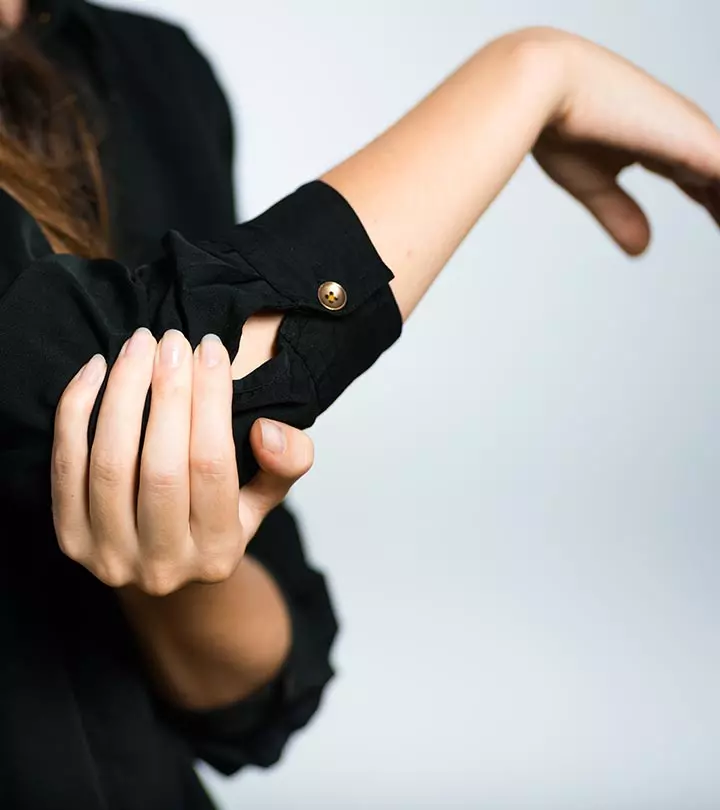
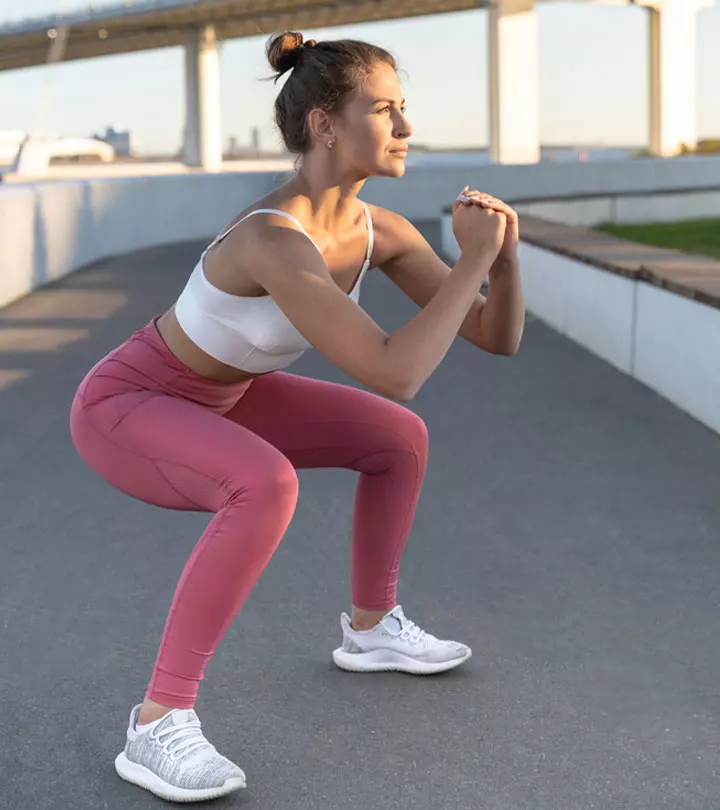
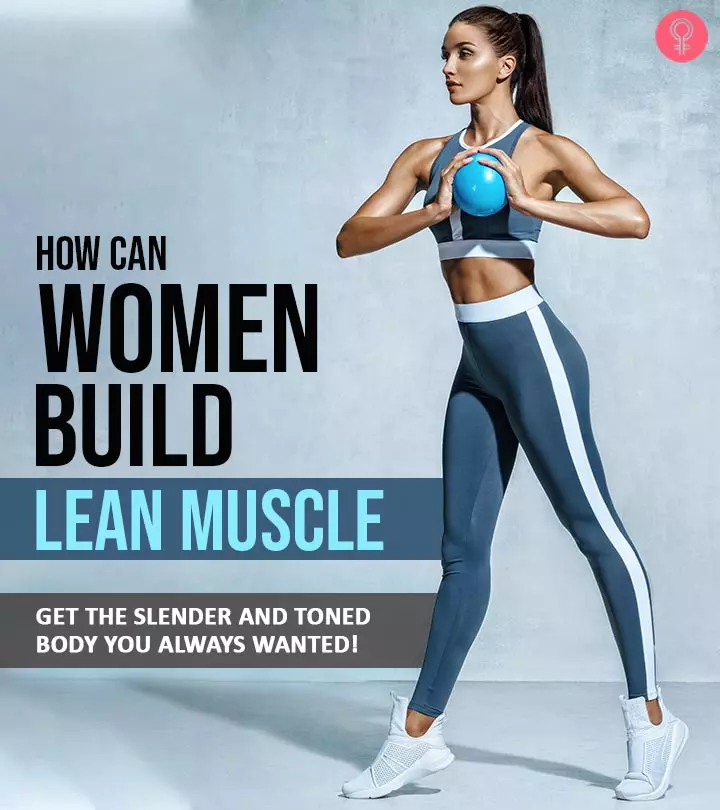
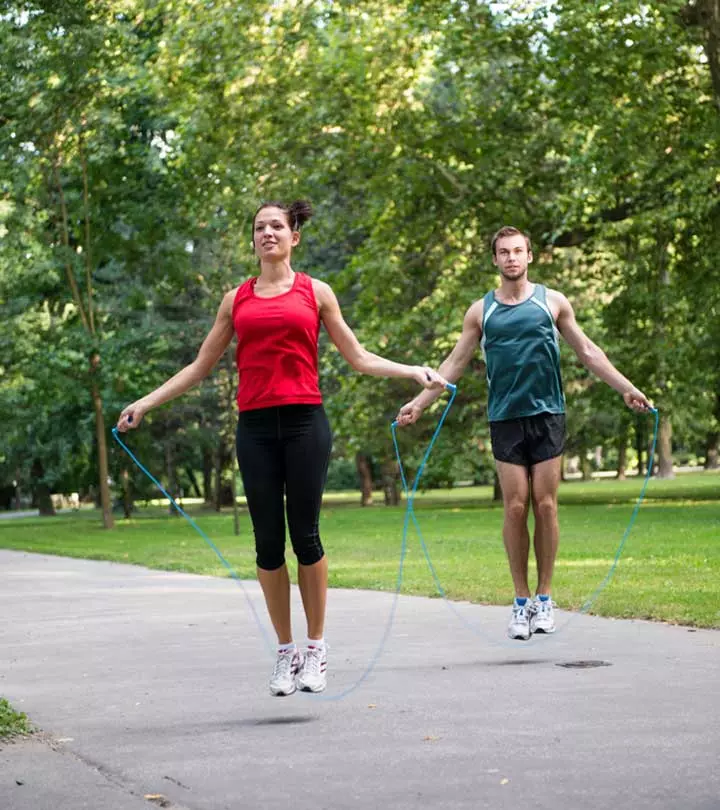

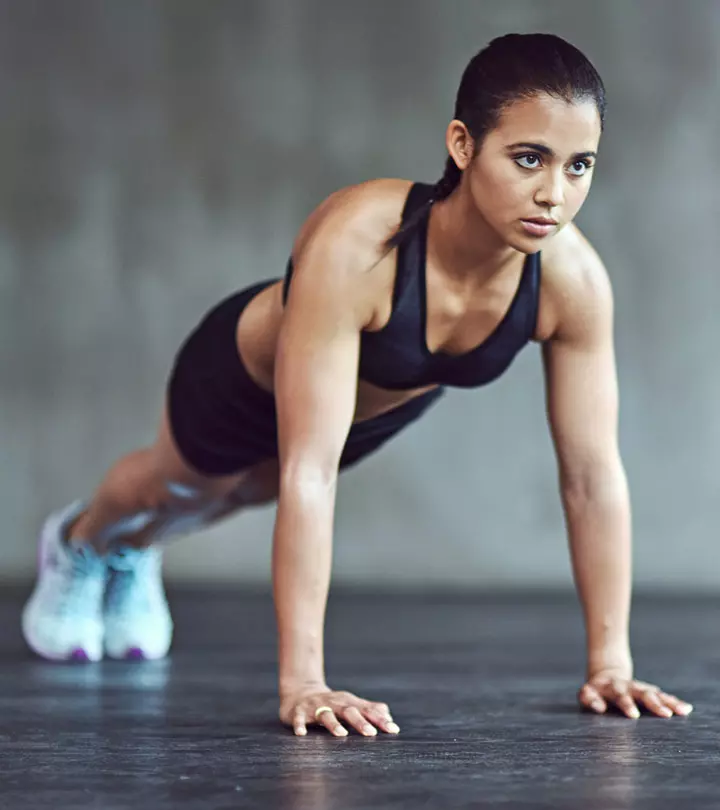

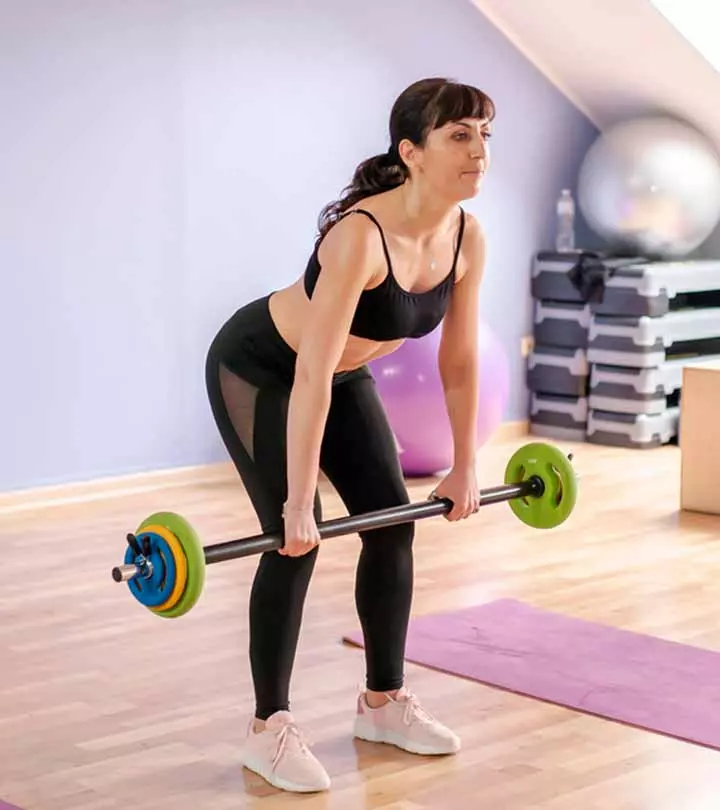
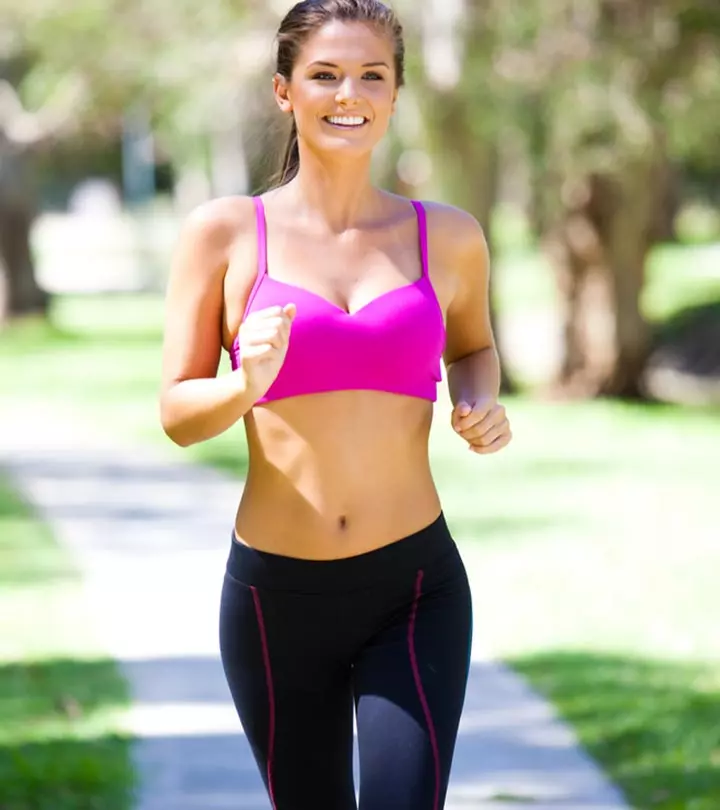


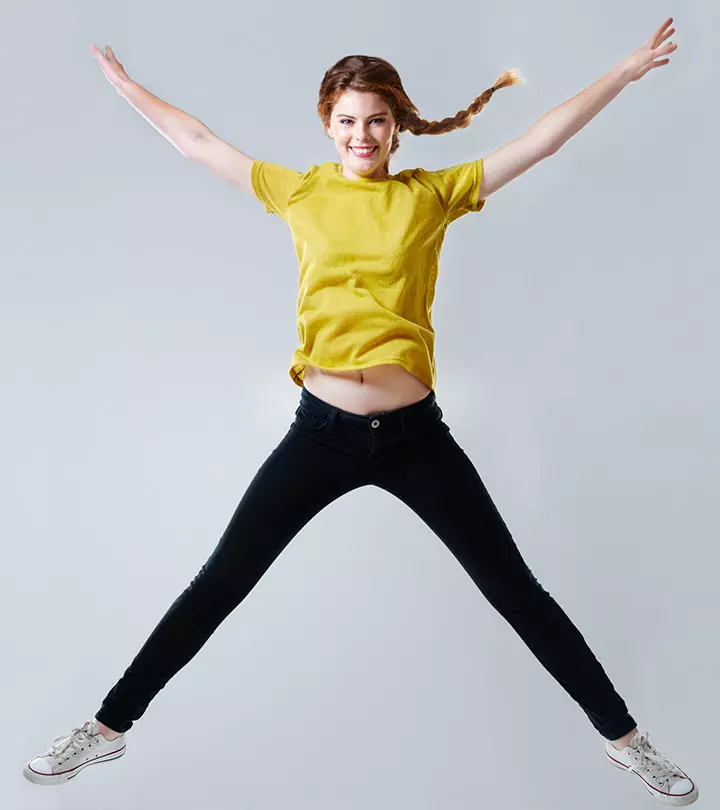


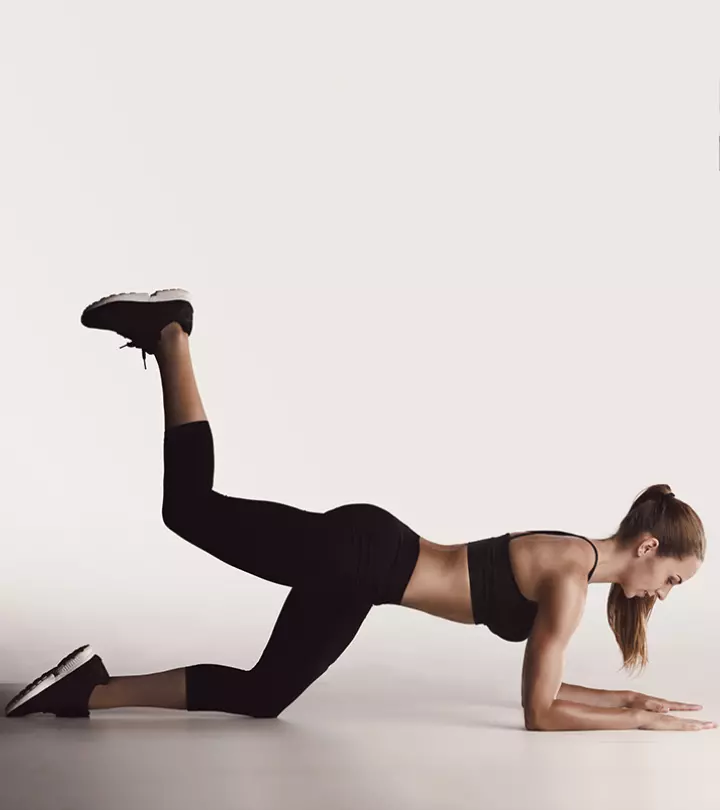



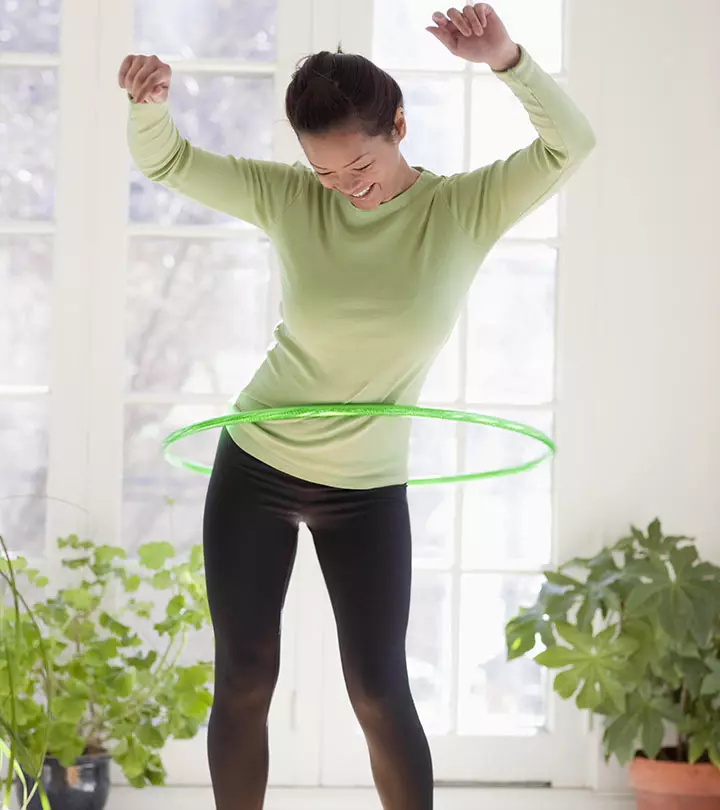
Community Experiences
Join the conversation and become a part of our empowering community! Share your stories, experiences, and insights to connect with other beauty, lifestyle, and health enthusiasts.